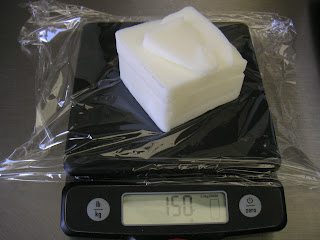










Rhubarb (genus: Rheum x hybridum or cultorum)
is one of the earliest plants to burst forth from the cold soil in early spring.
Its impressive leaves and colorful red or green stalks grow quickly.
The stalks are pulled and sliced for delicious pies and sauces.
Rhubarb has experienced a renaissance in recent years as a sauce for game and various vegetables in upscale restaurants, but its reputation as a "pie plant" is the most widely known. Isolated farmers and ranchers in the high plains appreciated rhubarb as an early "fruit" for pies and desserts, even though the plant is a vegetable by botanic classification.
Pull the stalks, don't break them off. After "pulling" for a pie, I give my plants a nice dose of liquid fertilizer to boost growth for more pies. You may also purchase rhubarb in the market.
My favorite rhubarb pie is simply rhubarb + sugar + a pinch of anise (or ginger for variation), and of course, a wonderful crust. No strawberries to interfere with the pure taste here!
My crust is a lard crust. Ingredients are weighed on the kitchen scale. I cannot convert dry measures from weight to "cups" and guarantee that the final result will be satisfactory. If you do not weigh your pastry ingredients, please use your own favorite pie crust recipe. If I could encourage one kitchen technique that pays unimaginable benefits to the home cook, it would be the weighing of ingredients. Simple, accurate, saves dish washing, etc.
Kitchen Garden Cook's Pie Crust is mixed in the food processor. It can be done by hand on a floured board if you don't have a processor. This makes a double crust 9" pie.
Put into processor:
300 grams all purpose flour
150 grams lard (the solid kind, not the soft bucket kind) cut into pieces
1 teaspoon salt
1 tablespoon sugar
Pulse until lard disappears and mixture is a coarse meal.
Add 1/4 cup COLD water and pulse 5 or 6 times.
If dough is still dry and a big pinch of it will not hold together, add a few more DROPS of cold water, pulse once or twice, and check again. Don't process until it forms a ball--too much. Too wet dough will be tough after baking. It should just hold together.
Dump dough into a wide mouth bowl, push it away from you a few times with the heel of your hand (see photo) and "gather" it with a plastic scraper if you have one. Pat into a hockey puck shape, wrap in plastic wrap or parchment paper and chill at least 30 minutes.
Rolling crust:
Roll with a floured wooden pin on a sheet of parchment paper--placed long way toward you, with a little overhang at the counter edge. Lean against this overhang and the paper will stay still. I roll the whole piece of dough at once, to the thickness I like, and trim off the extra using the pie pan as a guide (see photo). Stack the remaining rolled dough (see photo) and roll out again for the upper crust. Flaky pastry is the goal--if you wad scraps up into a ball, it won't be as flaky as the stacking technique. Cut a hole in the middle with a biscuit cutter or cookie cutter for steam to escape. The traditional lattice strips may also be used (more work). Cover filling with top crust and crimp edges together.
Rhubarb Filling for 9-inch pie
2 pounds fresh rhubarb (4 generous cups) cut into 1/2 inch pieces
(If stalks are very large, split lengthwise before slicing into pieces)
1 cup white sugar
1/2 cup brown sugar
pinch salt
1/2 teaspoon powdered anise
(Other spices such as ginger or cardamon may be substituted for anise, but try anise first)
Toss all together and let stand about 30 minutes for fruit to "juice up" before filling crust.
If 10" pie is desired, add 2 more cups rhubarb and 1/2 cup additional sugar. Sugar amount depends on your taste for sweetness. If rhubarb seems dry after standing 30 minutes, add a tablespoon or two of orange juice or lemon juice to moisten. On the other hand, if it is too juicy, sprinkle 1/4 cup flour over the fruit and toss with a fork. It will thicken it during baking.
Baking:
Place a drip catching steel plaque or pizza pan under your pie dish when you turn on the oven. Pie will bake more evenly if the plaque or sheet is heated with the oven.
Bake in a pre-heated 400 degree F oven for 15 minutes. Then turn down oven to 350 F and continue baking for about 40 minutes, until crust is nicely browned and filling bubbling. Let rest until cool enough to cut.
Enjoy!
Kitchen Garden Cook
No comments:
Post a Comment